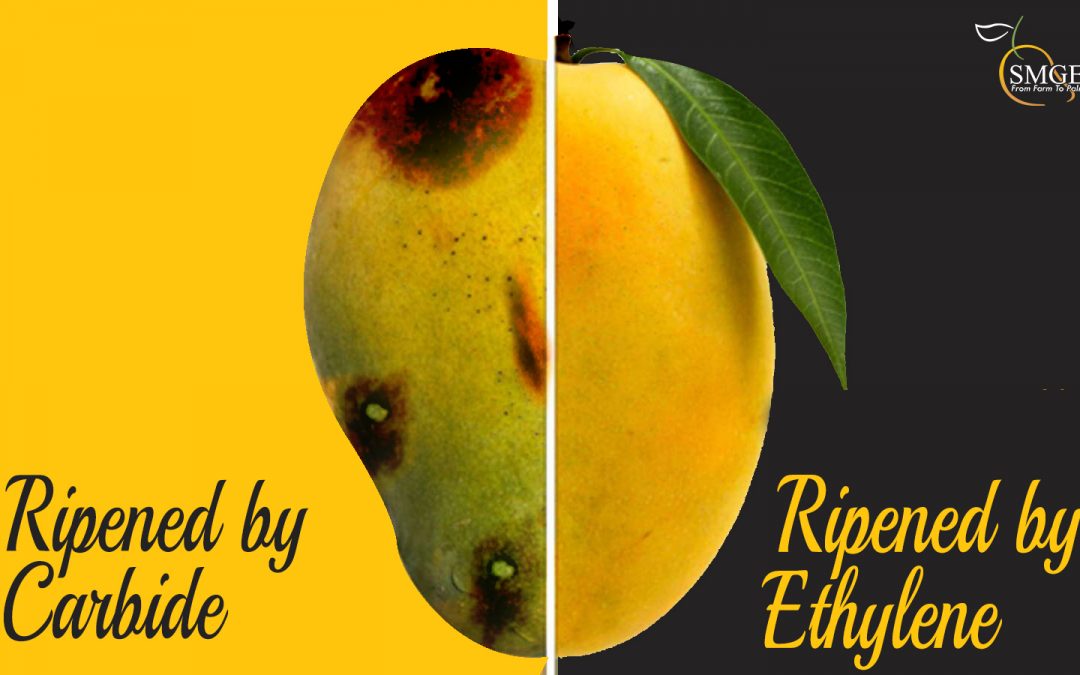The fruits are the wonders of nature that contain all the essential nutrients and reduces the risk of certain diseases. But to serve the purpose fruits need to be grown and ripened naturally to give us all these benefits. Among the fruits family, Mango is considered as the King of fruits, & nobody can compromise to eat substandard mangoes. Mangoes ripe naturally in trees but if farmers harvest the already ripened mangoes from the tree, then they cannot be transported in intact form. The ripened fruits are not suitable to transport & carry.
Therefore, out of necessity, some traders, farmers & transporters use few chemicals to ripen the mangoes. Such chemicals are used during the pre-harvest, post-harvest & transportation. The most common among them is the Calcium Carbide. There is no doubt in the improved the market quality of fruits but nobody especially the consumer has no idea about the ingredient he is eating in the name of a fruit.
To understand the hazards of Calcium Carbide, an artificial ripening chemical, one must understand the natural ripening process.
Natural ripening:
The life of fruit can be divided into three phases, the fruit setting phase, fruit development phase & the fruit ripening phase. These phases cannot be reversed. Moreover, several factors like humidity, temperature, etc act as catalysts.
The ripening of mango is a physiological process in which physical & biochemical changes take place, which renders the fruit less green, soft & sweeter in taste, develops aroma & texture. The natural ripening hormone is ethylene, which is naturally present in the fruit which lets it ripen.
Carbide Ripening
Some vendors & retailers accelerate the process of ripening by using artificial ripening agents to make the fruits quickly edible & palatable. The one & most used chemical among them is Calcium Carbide (CaC2), locally known as Carpet.
The commercial-grade carbide contains the contaminants of Arsenic & phosphorous hydride. These two compounds even in trace amounts can be poisonous to humans. It is legally banned in most countries due to its carcinogenic (cancer-causing) affects. But still, dozens of farmers are involved in this malpractice of harvesting the unripe mangoes and treat them with Calcium Carbide. We can imagine if the mango is plucked in its early period before ripening then the Carbide quantity required to ripe will be more. Carbide when hydrolyzed produces acetylene which is an analog of ethylene that ripens the mangoes.
Carbide is a hot compound & it destroys the carbohydrate sugary content & other nutrients before the mango goes into the human body. Thus, renders mangoes internally unhealthy despite a desirable appearance. It is a corrosive element that is not only harmful to the consumer but also to the person who comes in contact with the chemical.
It produces hazardous affects on human health for the short & long term. Early symptoms of phosphorous & arsenic are diarrhea, thirst & irritation in the eyes, mouth, nose & throat, while chronic exposure to chemicals leads to Peptic ulcers, & neurological disorders. It affects the liver, heart, brain & stomach.
Ethylene Induced Ripening
Ethylene is a natural plant hormone & growth regulator. It is responsible for the fruit ripening and senescence. It is found to be non-toxic and non-hazardous to humans in the concentrations found in ripening chambers (i.e. 100-150 ppm). So, it has no reported hazards on plant or human health as that of Calcium Carbide. Therefore, its use is legally allowed as an external fruit ripener.
SMGE- Sindh Mango Growers & Exporters use the safest good agriculture practices and ripe the mangoes in fully equipped automated ethylene chambers, which regulate the humidity, temperature, effective ventilation with air circulation, and specific gas emission levels (e.g., Carbon dioxide). The mangoes are healthy and safe to eat.
Notes for the Consumers
- Buy mangoes or any fruit only in its season, nor before the season, neither after the season.
- Select the fruit without spots, necrosis, or any other abnormality.
- Wash the fruits thoroughly! Peeling it off can reduce the risk of chemical intake.

